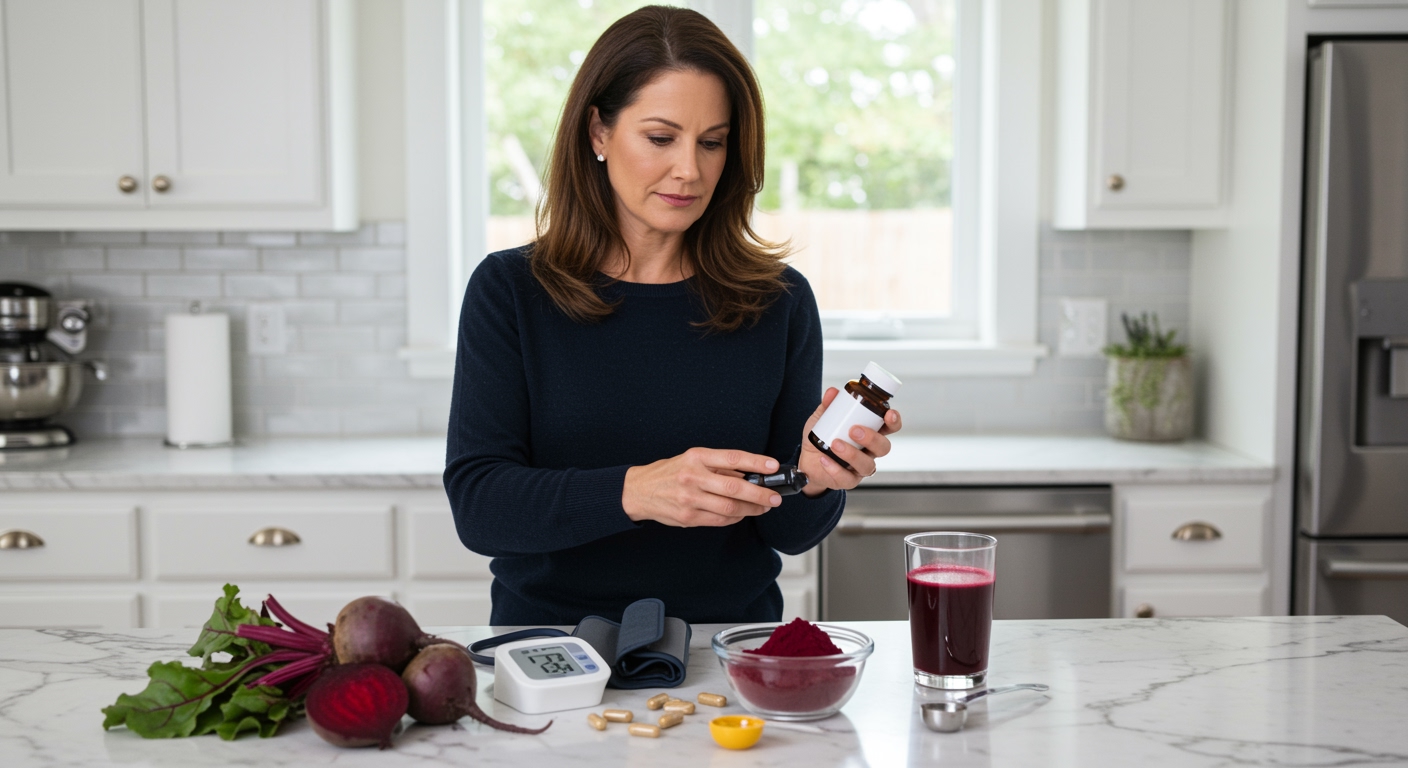✪ Key Takeaway: Oatmeal can help lower blood pressure naturally through its beta-glucan fiber content, which reduces arterial stiffness.
Introduction
Your morning bowl of oatmeal might be doing more than filling your stomach.
You probably wonder if simple breakfast foods can really impact something as serious as blood pressure. The connection between what you eat and your cardiovascular health runs deeper than most people realize.
Hi, I am Abdur, your nutrition coach and today I am going to explain how oatmeal can naturally help control your blood pressure and what the science tells us about this powerful breakfast option.
What Makes Oatmeal Special For Blood Pressure?
The secret lies in a special type of soluble fiber called beta-glucan that oats contain in abundance.
Beta-glucan forms a gel-like substance in your digestive system that helps reduce cholesterol absorption. This process directly impacts your blood vessels by keeping them more flexible and less prone to stiffening.
Research shows that consuming 3 grams of beta-glucan daily can reduce systolic blood pressure by 2-3 mmHg. While this might seem small, even modest reductions in blood pressure can significantly lower your risk of heart disease and stroke.
The fiber also helps regulate blood sugar levels, preventing the spikes that can stress your cardiovascular system. When your blood sugar remains stable, your heart does not have to work as hard to pump blood throughout your body.
Additionally, oats contain avenanthramides, unique antioxidants that help relax blood vessels and improve blood flow. These compounds work synergistically with beta-glucan to create a powerful combination for cardiovascular health.
✪ Fact: One cup of cooked oatmeal provides about 4 grams of beta-glucan fiber, exceeding the daily recommended amount for heart health.
How Does Oatmeal Work In Your Body?
When you eat oatmeal, the beta-glucan fiber begins working immediately in your digestive tract.
The fiber binds to bile acids in your intestines, forcing your liver to use cholesterol to make new bile acids. This process naturally lowers your LDL cholesterol levels, which directly benefits your blood pressure.
Lower cholesterol means less plaque buildup in your arteries. Clean, flexible arteries allow blood to flow more easily, reducing the pressure your heart needs to generate to circulate blood throughout your body.
The potassium in oats also plays a crucial role in blood pressure regulation. This mineral helps balance sodium levels in your cells and supports proper muscle function, including your heart muscle.
Oatmeal also contains magnesium, which helps relax blood vessel walls and supports healthy blood pressure. Many people do not get enough magnesium from their diet, making oatmeal an excellent source of this essential mineral.
The slow-digesting carbohydrates in oats prevent blood sugar spikes that can trigger inflammation and stress your cardiovascular system. This steady energy release helps maintain consistent blood pressure throughout the day.
✪ Pro Tip: Eat oatmeal within 2 hours of waking up to maximize its blood pressure benefits throughout the day.
What Type Of Oats Work Best?
Not all oats are created equal when it comes to blood pressure benefits.
Steel-cut oats contain the highest concentration of beta-glucan because they undergo minimal processing. These oats retain their natural fiber structure, making them the most effective choice for cardiovascular health.
Old-fashioned rolled oats come in second place. They are steamed and flattened but still maintain most of their beneficial compounds. These oats cook faster than steel-cut varieties while providing substantial health benefits.
Quick oats have been processed more extensively, reducing their fiber content and beta-glucan concentration. While they still offer some benefits, they are less effective for blood pressure management than less processed varieties.
Instant oats often contain added sugars and sodium, which can actually work against your blood pressure goals. The high processing also destroys much of the natural fiber that makes oats beneficial for cardiovascular health.
Avoid flavored instant oatmeal packets completely. These products typically contain excessive amounts of sugar and artificial ingredients that can spike your blood pressure and counteract any potential benefits.
✪ Note: Choose oats with minimal processing and no added sugars to maximize their blood pressure lowering effects.
How Much Oatmeal Should You Eat?
The optimal serving size for blood pressure benefits is about half a cup of dry oats daily.
This amount provides approximately 4 grams of beta-glucan, which research shows is effective for cardiovascular health. You can eat this amount in one sitting or split it throughout the day.
Eating more than one cup of dry oats daily may cause digestive discomfort for some people. Start with smaller portions and gradually increase your intake to allow your digestive system to adjust to the increased fiber content.
Consistency matters more than quantity. Eating a moderate amount of oatmeal daily will provide better long-term benefits than consuming large amounts sporadically.
Combine your oatmeal with other heart-healthy foods like berries, nuts, or seeds to enhance its blood pressure lowering effects. These additions provide additional antioxidants and healthy fats that support cardiovascular health.
Drink plenty of water when increasing your oat consumption. The fiber needs adequate hydration to work effectively in your digestive system and provide maximum health benefits.
✪ Pro Tip: Prepare overnight oats to save time while ensuring you get your daily dose of blood pressure lowering fiber.
When Will You See Results?
Most people begin seeing blood pressure improvements within 2-4 weeks of regular oatmeal consumption.
The initial changes occur as your body begins processing the beta-glucan fiber and reducing cholesterol levels. You might notice improved energy levels and better digestion before seeing measurable blood pressure changes.
Significant improvements typically become apparent after 6-8 weeks of consistent consumption. This timeline allows your cardiovascular system to adapt to the improved cholesterol profile and reduced arterial stiffness.
Individual results vary based on your starting blood pressure, overall diet, and lifestyle factors. People with higher initial blood pressure readings often see more dramatic improvements than those with borderline hypertension.
Keep track of your blood pressure readings to monitor progress. Take measurements at the same time each day and record them in a journal or app to identify trends and improvements.
Remember that oatmeal works best as part of an overall heart-healthy lifestyle. Combine it with regular exercise, stress management, and other nutritious foods for optimal blood pressure control.
✪ Fact: Studies show that people who eat oats regularly have 5-10% lower blood pressure readings than those who do not.
The Bottom Line
Oatmeal can indeed help control blood pressure naturally through its unique combination of beta-glucan fiber, potassium, and magnesium.
Simple foods often provide the most powerful health benefits when consumed consistently over time. The key is choosing minimally processed oats and making them a regular part of your daily routine.
I would love to hear about your experience with oatmeal and blood pressure management. Have you noticed any changes in your readings after adding oats to your diet? Share your thoughts and questions in the comments below.
References
At NutritionCrown, we use quality and credible sources to ensure our content is accurate and trustworthy. Below are the sources referenced in creating this article:
- PubMed: Oat beta-glucan and blood pressure
- Very Well Health: Does oatmeal lower blood pressure
- Mayo Clinic: Whole grain foods and blood pressure
- PubMed: Beta-glucan cardiovascular effects





